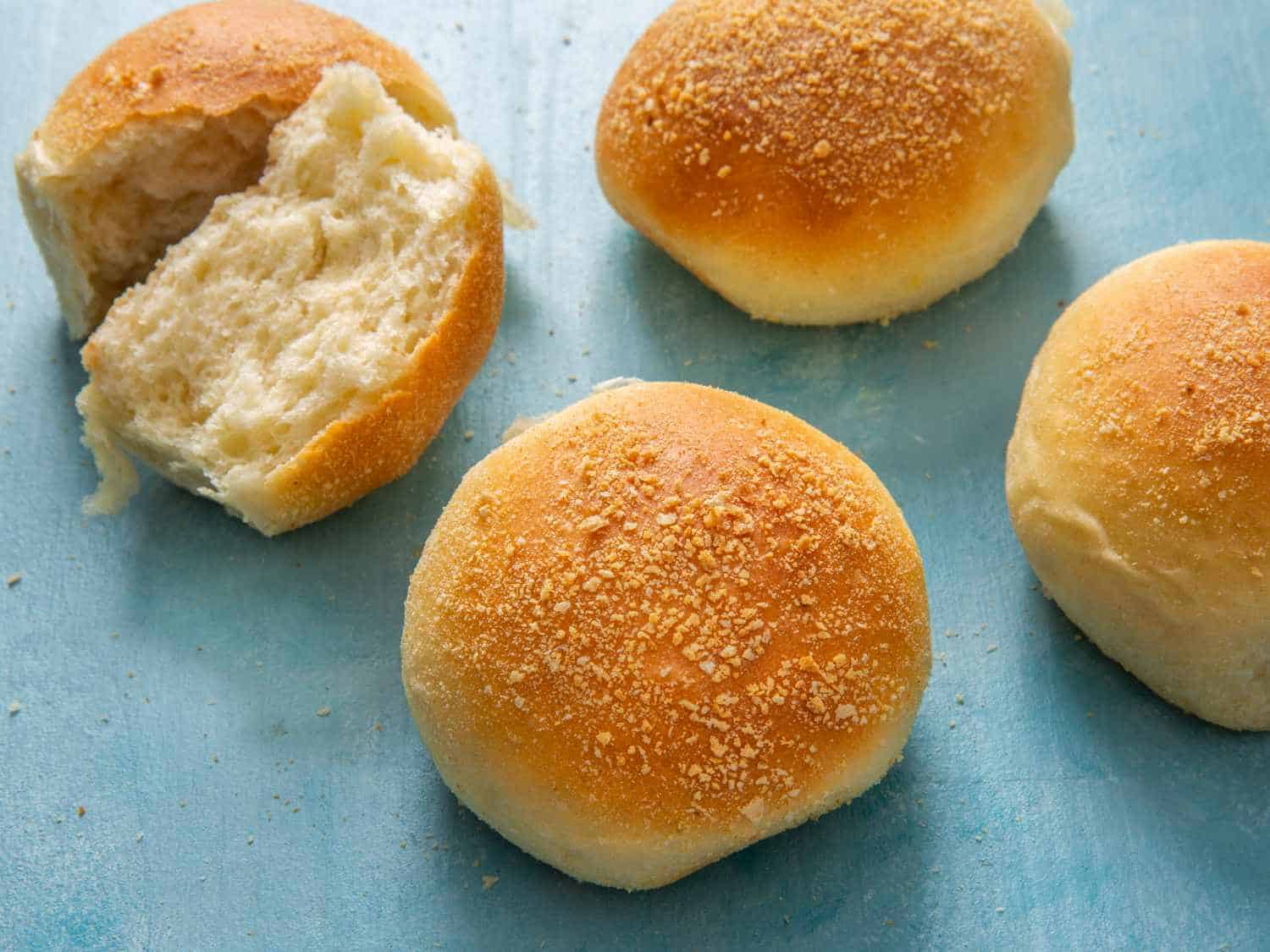Embark on a Tasty Journey with Your Kids Featuring Pandesal!
Welcome, dear parents, to the delightful world of pandesal! This traditional Filipino bread roll is a household staple that’s not only delicious but has the amazing ability to bring families together around the table. If you’re eager to introduce new flavors to your children’s palate or simply want to dive deeper into the rich tapestry of Filipino culture through its baked goods, you’re in the right place!
What is Pandesal?
Before we get to the fun part, let’s cover some basics. Pandesal, sometimes spelled pan de sal, translates to “bread of salt” in Spanish, reflecting the Philippines’ historical connections. However, don’t be misled by its name—pandesal is known for its slightly sweet taste and fluffy texture, which has made it the perfect companion for both savory and sweet dishes alike. It’s the quintessential breakfast and snack bread in the Philippines and has warmed its way into the hearts and tummies of many around the globe.
Nutritional Benefits for Your Little Ones
As a parent, you’re always on the lookout for nutritious options for your children. While pandesal is not a health food, it certainly can fit into a balanced diet. These little bread rolls are made with basic ingredients like flour, yeast, sugar, and salt, providing a good source of carbohydrates for energy. Moreover, making pandesal at home allows you to control what goes in them. You can use whole wheat flour for added fiber, or even sneak in some pureed vegetables for extra nutrition!
Introducing Pandesal to Your Kids’ Diet
Introducing new foods can sometimes be a challenge with young ones, but pandesal has a kid-friendly taste and texture. Here’s how you can make it a fun and engaging experience:
- Involve Them in Baking: Make pandesal making a family activity! Kids love getting their hands in the dough, and it’s a perfect opportunity to teach them about cooking and measuring ingredients.
- Get Creative with Fillings: From classic cheese and ham to more adventurous spreads like Nutella or peanut butter, let your kids pick their favorite stuffing to make pandesal an exciting treat.
- Storytime with Bread: Share stories about your own childhood experiences with pandesal or about Filipino culture while enjoying these warm rolls. It’s great bonding and educational time!
Homemade Pandesal Recipe
Now that we’ve talked about what pandesal is and how it can be a wholesome addition to your family’s diet, why not try making it at home? Below is a simple recipe that you and your children can enjoy making together.
Ingredients: 4 cups all-purpose flour (or a mix of whole wheat and all-purpose) 2 teaspoons instant yeast ½ cup sugar 1 teaspoon salt 1 cup warm milk 2 tablespoons butter, melted 2 eggs Breadcrumbs for coating Instructions: 1. Combine flour, yeast, sugar, and salt in a mixing bowl. 2. In another bowl, whisk together the warm milk, melted butter, and eggs. 3. Gradually add the wet ingredients to the dry ingredients, kneading until everything comes together to form a dough. 4. Once the dough is smooth and elastic, cover it with a damp cloth and let it rise in a warm place until it doubles in size. 5. After the dough has risen, punch it down and form into rolls. Roll each piece in breadcrumbs and place on a baking sheet. 6. Let the pandesal rolls rise again while your oven preheats to 350°F (175°C). 7. Bake for 20 minutes or until golden brown.
This introductory guide to pandesal aims to help you understand the joy that this simple bread roll can bring to your family’s life. Pandesal isn’t just food; it’s a tradition, a comfort, and an invitation to explore new tastes and customs. So, gather your little ones and get ready to bake your way to a new family favorite!

5 Things Parents Should Know When Preparing Pandesal
Ready to don your aprons and whip up some delightful pandesal with your kiddos? Here are five key points to keep in mind for the best bread roll experience:
- Patience is Key: Bread-making is an exercise in patience, and pandesal is no exception. Be sure to allow enough time for the dough to properly rise. This is a great lesson in waiting for good things to come!
- Temperature Matters: Make sure your milk is warm (not hot) when you mix it with the yeast. If it’s too hot, you risk killing the yeast; if it’s too cold, the yeast won’t activate, and your dough won’t rise well. Aim for a temperature between 105°F and 110°F (40°C to 43°C).
- Quality of Ingredients: High-quality ingredients lead to high-quality bread. Choose the best flour you can get and consider organic options if possible. Freshness is also important, especially with the yeast, to ensure a good rise.
- Customization is Fun: Pandesal is wonderfully versatile. Encourage your kids to brainstorm their own variants—think about incorporating different grains, seeds, or herbs. Experimentation can result in exciting flavors and textures.
- Storage is Crucial: After baking, store pandesal properly to maintain its freshness. Wrap cooled rolls in a clean cloth and place them in a bread box or an airtight container. Remember, homemade pandesal doesn’t contain preservatives, so it’ll last about 2-3 days before starting to stale.
Building a Pandesal Tradition in Your Home
Now that you have the lowdown on creating this Filipino favorite, it’s time to make it your own. Start a weekend tradition where you and the kids don pandesal capes and the kitchen becomes your super-bakery. Record your baking ventures, and who knows, your pandesal recipe might just become a legendary family heirloom!
More Than Just a Bread: Pandesal and Culture
Pandesal is more than breakfast; it’s a reflection of Filipino resilience and ingenuity. Each bite is a tribute to the archipelago’s rich history and diverse influences. Sharing pandesal is sharing a piece of cultural heritage, and by baking it together, you open up a dialogue with your children about history, geography, and the importance of cultural diversity. Delve deeper into the stories behind pandesal, and let every bake be a journey through time and taste!
Staying Healthy with Pandesal
Everything in moderation, right? Balance pandesal with a varied diet, and remember, these scrumptious rolls can occasionally be the canvas for healthier options. Try pairing them with fruit jams, nut butters that are low in sugar, or a slice of avocado for a burst of healthy fats. Who knew learning about balanced eating could be so mouthwatering?
Pandesal is your canvas, and the possibilities are endless. So let’s knead, roll, and bake our way to cherished memories and full bellies. Happy baking, families!
For more great articles please see here. For more information see here
Disclaimer
The articles available via our website provide general information only and we strongly urge readers to exercise caution and conduct their own thorough research and fact-checking. The information presented should not be taken as absolute truth, and, to the maximum extent permitted by law, we will not be held liable for any inaccuracies or errors in the content. It is essential for individuals to independently verify and validate the information before making any decisions or taking any actions based on the articles.




